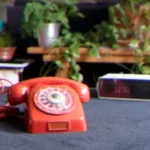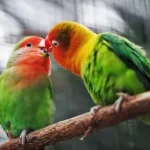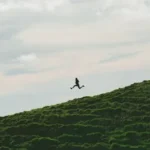- Dreams about insects, including pretty bugs like butterflies and dragonflies, hold symbolic meanings representing transformation, growth, adaptability, and cooperation.
- The actions of insects within dreams, such as flying, landing, biting, or being eaten, provide additional insights into their symbolic significance.
- Bug dreams can evoke a range of emotions, including fear and anxiety, wonder and awe, or peace and tranquility, offering valuable insights into our subconscious thoughts and feelings.
- Insects have been assigned various symbolic meanings in dreams across different cultures and religions, with variations in interpretation and cultural taboos surrounding specific insects.
Have you ever wondered what dreams about insects really mean? These fascinating dreams often hold deeper symbolic meanings that can provide insights into our lives. We will explore the symbolism of pretty bugs in dreams and discuss the historical, cultural, and psychological interpretations of these intriguing nocturnal visions.
Symbolism of Pretty Bugs in Dream Significance

1. Representation of Different Types of Insects
Insects come in various forms, each with its own symbolic representation in dreams. Understanding these representations can provide valuable insights into the messages your dreams are trying to convey.
- Butterflies
Butterflies are powerful symbols of transformation, growth, and beauty. They represent the process of shedding old habits or beliefs and embracing personal growth. Dreaming of butterflies can indicate a period of positive change and self-discovery. - Dragonflies
Dragonflies symbolize adaptability, agility, and a sense of self-realization. They represent the ability to navigate through life’s challenges with grace and ease. Dreaming of dragonflies can signify a need for flexibility and resilience in the face of obstacles. - Ladybugs
Ladybugs are often seen as symbols of good luck, protection, and harmony. They represent a positive shift in circumstances and a sense of inner peace. Dreaming of ladybugs may indicate that positive change is on the horizon or the need to bring more balance into your life. - Bees
Bees symbolize hard work, community, and cooperation. They represent the importance of productivity and teamwork in achieving your goals. Dreaming of bees can suggest a need for diligent effort and collaboration in your waking life.
2. Actions of Insects within Dreams and Their Meanings
The actions of insects within dreams can provide additional insights into their symbolic meanings. Here are some common actions and their associated interpretations:
- Flying
When an insect is flying in your dream, it often represents freedom, liberation, and a sense of independence. It may indicate a desire to break free from constraints or explore new possibilities. - Landing
If an insect lands on you in your dream, it may symbolize a need for closer attention to a particular aspect of your life. The insect’s presence suggests that you should pay closer attention to the message it carries. - Biting or Stinging
When an insect bites or stings you in a dream, it can signify feelings of vulnerability, irritation, or the presence of negative influences in your life. It may be a warning to protect yourself from harmful people or situations. - Eating or Being Eaten
Dreams of insects eating or being eaten can represent the process of transformation and renewal. It may indicate that you are letting go of old habits or thought patterns and embracing new perspectives.
3. Emotional Impact Related to Different Bug Dream Scenarios
Bug dreams can evoke a range of emotions, from fear and anxiety to wonder and awe. The emotional impact of these dreams can offer valuable insights into your subconscious thoughts and feelings. Here are some emotional scenarios related to different bug dream scenarios:
- Fear and Anxiety
Dreams that elicit fear or anxiety, such as being chased by bugs or feeling overwhelmed by their presence, may indicate underlying fears or anxieties in your waking life. These dreams can serve as an invitation to explore and address these fears. - Wonder and Awe
Dreams of pretty bugs like butterflies or dragonflies often evoke feelings of wonder and awe. These dreams may represent a sense of fascination with the beauty and grace of nature or the potential for personal growth and transformation. - Peace and Tranquility
Dreams of ladybugs or other peaceful insects can create a sense of peace and tranquility. These dreams may signify a period of harmony and balance in your life, where you feel at ease with yourself and your surroundings.
Understanding the emotional impact of bug dreams can help you gain a deeper understanding of their underlying messages and significance.
Historical and Cultural Interpretations of Insect Dreams

1. Ancient Perceptions on Insect Dream Symbolism
Insect dreams have been a topic of interest for thousands of years, with ancient civilizations often assigning symbolic meanings to these dreams. The ancient Egyptians, for example, believed that certain insects represented various aspects of life and the afterlife. The scarab beetle, known for its ability to roll dung into balls, was seen as a symbol of rebirth and regeneration. It was commonly associated with the sun god Ra and was often depicted in hieroglyphics and amulets.
In ancient Mesopotamia, clay tablets dating back 5000 years contain records of dreams and their interpretations. These texts often mention insects as symbols of cares and anxieties. For instance, dreaming of locusts was seen as a sign of impending devastation, while dreaming of bees was associated with good luck and harmony.
2. Variations in Insect Dream Symbolism Across Cultures and Religions
In different cultures and religions around the world, insects have been assigned various symbolic meanings in dreams. Here are a few examples:
- Native American cultures
Many Native American tribes believe that insects bring messages from the spirit world. For instance, butterflies are often seen as symbols of transformation and spiritual growth, while bees represent hard work and community. - Hinduism
In Hinduism, dreams are seen as important sources of guidance. Dreams involving insects may be interpreted as omens or messages from the gods. For example, dreaming of ants may symbolize diligence and increased business opportunities, while dreaming of a wasp could indicate trouble and danger ahead. - Islam
Islamic dream interpretation assigns specific meanings to different insects. For instance, dreaming of a mosquito entering your ear is believed to bring blessings and authority, while dreaming of flies is associated with filth and guilt. - Chinese culture
In traditional Chinese culture, insects are often seen as symbols of good luck and prosperity. For example, dreaming of a dragonfly is believed to bring change and stability, while dreaming of a butterfly is seen as a sign of joy and happiness. - Christian symbolism
In Christianity, insects like locusts and flies are often associated with plagues and pestilence. These insects are mentioned in the Bible as signs of divine punishment and destruction.
3. Cultural Interpretations of Specific Insects in Dreams
Different insects have specific symbolic meanings in dreams across various cultures. Here are a few examples:
- Dragonflies
In many cultures, dragonflies are seen as symbols of change, regeneration, and flightiness. They may represent the need for adaptability and embracing transformation. - Bees
Bees are often associated with hard work, harmony, and prosperity. Dreams involving bees may signify the need for industriousness and cooperative efforts with others. - Butterflies
Butterflies are universally recognized as symbols of transformation, beauty, and spirituality. Dreams involving butterflies may suggest a period of personal growth and self-discovery. - Cockroaches
Cockroaches are often associated with uncleanliness and longevity. Dreaming of cockroaches may symbolize unresolved issues or feelings of disgust. - Ants
Ants represent diligence, cooperation, and increased business opportunities in many cultures. Dreams involving ants may signify the need for hard work and collaboration to achieve success. - Spiders
While not an insect, spiders often appear in dreams and have their own symbolic meanings. They are often associated with creativity, patience, and the weaving of fate. Dreams involving spiders may indicate the need to explore your creative side or weave your own destiny.
4. Cultural Taboos and Superstitions Surrounding Insect Dreams
In some cultures, certain insects in dreams are considered bad omens or signs of impending misfortune. For example, dreaming of a swarm of flies may symbolize jealousy, insecurity, or anxiety. Dreaming of a hornet or wasp may indicate trouble or danger ahead. These interpretations often stem from cultural beliefs and superstitions surrounding insects.
5. The Significance of Insect Dreams
While the specific interpretations of insect dreams may vary across cultures and religions, the presence of insects in dreams is generally considered significant. In many cases, insect dreams can serve as powerful symbols of personal growth, transformation, or even warning signs. Paying attention to your dreams and reflecting on the symbolic meanings of insects can provide insight into your [1] unconscious desires, fears, and aspirations.
It’s important to remember that dream interpretation is subjective and can vary depending on the individual’s personal experiences, beliefs, and cultural background. To truly understand the meaning of your insect dreams, it is helpful to consider your own unique perspective and the context in which the dream occurs.
Psychological Analysis

Dreams have always fascinated us, offering a window into our subconscious minds and providing insight into our deepest desires, fears, and conflicts. Among the various types of dreams that people experience, dreams featuring insects have long been of interest to psychologists and psychoanalysts. In this section, we will explore the psychological analysis of insect dreams and discuss their meaning, the link between insect dreams and mental health, and the connection between dreams about bugs and internal conflicts.
1. Psychoanalytical Meaning Behind Insect Dreams
One of the most influential figures in dream analysis, Sigmund Freud, often encountered patients who reported dreams featuring insects. For Freud, these dreams held significant symbolic meanings. He believed that insects often represented repressed desires and unconscious fears. For example, dreaming of insects like spiders could symbolize the dominant maternal figure or female power in one’s life. It could also indicate a fear or avoidance of tempting or seductive situations.
Freud also saw dreams about insects as a reflection of unresolved conflicts or anxieties. Dreams of being bitten by an insect might suggest a lack of communication between one’s conscious and subconscious mind. It could signify a feeling of not being taken seriously or a fear of letting down one’s guard in certain areas of life.
Additionally, dreaming of killing insects can have both positive and negative connotations. On one hand, it could symbolize the ability to conquer inner demons and resolve long-standing issues. On the other hand, it might suggest a need for self-reflection and introspection to address unpleasant situations or conflicts that have been bothering you.
2. The Link Between Insect Dreams and Mental Health
Insect dreams can also be linked to mental health. They often serve as indicators of our emotional well-being and can provide insights into our psychological state. For instance, dreams about insects crawling on your body might signify feelings of anxiety or distress. This dream could suggest that certain events or relationships in your life are causing you mental and emotional turmoil, and it is essential to address these issues.
Moreover, recurring insect dreams can be a sign of unresolved psychological conflicts or underlying mental health concerns. These dreams might indicate that you are avoiding or suppressing certain emotions or experiences that need to be addressed to achieve inner peace and well-being. It is crucial to pay attention to these dreams and seek support from a mental health professional if needed.
3. The Connection Between Dreams About Bugs and Internal Conflicts
Dreams about bugs also reflect our internal conflicts and struggles. Insects often elicit fear and discomfort in humans, making them powerful symbols in dreams. These dreams might symbolize the presence of negative thoughts, guilt, or anxiety that haunt us. They can serve as a reminder of unresolved issues or internal battles that require attention.
For example, dreaming about an insect attack could represent the feeling of being overwhelmed or attacked by external situations or people. It might reflect the need to confront these challenges head-on rather than avoiding them.
Dreams of bugs infesting our homes or personal spaces could indicate a sense of invasion or intrusion in our lives. This dream might suggest that we need to set boundaries and protect ourselves from negative influences or toxic relationships.
Presence of Insects in Art, Literature, and Film

Insects have long captivated artists, writers, and filmmakers, inspiring them to incorporate these tiny creatures into their creative works. The symbolism of insects in dreams has also been a source of fascination. Let’s explore how insects have been depicted in various artistic mediums and how they have been linked to the symbolism of pretty bugs in dreams.
1. Depictions of Insect Dreams in Art
Throughout history and across cultures, insects have appeared in art as symbols of beauty, rebirth, and fragility. One such example is the scarab beetle, which was revered by ancient Egyptians. The scarab’s habit of rolling dung balls was seen as a representation of the sun’s journey across the sky. Artists often portrayed scarabs in their artwork, showcasing their intricate designs and connection to the natural world.
Another example can be found in the works of Lewis Carroll, particularly in “Alice’s Adventures in Wonderland” and “Through the Looking-Glass.” These literary masterpieces feature surreal lands with fantastical insects that symbolize the dreamlike quality of the stories. From talking caterpillars to bread-and-butter-flies, Carroll uses insects to create a whimsical and otherworldly atmosphere.
2. Use of Insect Symbolism in Literature and Film
Insects have played significant roles in literature and film, often as symbols for various themes and emotions. Franz Kafka’s novella “The Metamorphosis” tells the story of Gregor Samsa, who wakes up one morning transformed into a giant insect. This tale is symbolic of isolation, alienation, and the human condition. The insect metamorphosis represents a physical manifestation of Gregor’s internal struggles.
Shakespeare frequently incorporated insect symbolism into his plays. In “A Midsummer Night’s Dream,” fairies use magic to shape-shift into various woodland creatures, including insects. These transformations represent the whimsical and transformative nature of love.
Film has also explored the symbolism of insects in dreams. In “Nightmare on Elm Street 4,” a character turns into a giant cockroach, symbolizing fear and vulnerability. “The Fly” portrays a scientist who gradually transforms into a human-insect hybrid, highlighting themes of identity and the consequences of unchecked scientific exploration.
3. Interpretations of Dream-Related Names for Insects in Scientific Taxonomy
The association between dreams and insects extends to scientific taxonomy. Some insect species feature dream-related root words in their scientific names, adding another layer of symbolism. Enypnium quadripunctatum, a species of fly, derives its name from the Greek word “enypnion,” meaning dream. The presence of this word in the name underscores the connection between dreams and insects.
Similarly, the fly species Oniromyia pachycerata uses the Greek root “oneiros,” which translates to dream vision. By incorporating these dream-related words into scientific names, entomologists pay homage to the fascination with insects in dreams and their symbolic significance.
4. Capturing the Symbolism of Pretty Bugs in Dreams
Artists, writers, and filmmakers have long been drawn to the symbolism of insects, particularly when it comes to dreams. Insects in art not only depict the beauty and mystery of these creatures but also explore themes of transformation, human emotions, and our connection to the natural world. Literature and film use insect symbolism to discuss deeper meanings related to love, identity, and the human condition.
The dream-related names given to some insect species further highlight the symbolic connection between insects and dreams. Entomologists recognize the importance of these dream-inspired words in conveying the fascination and mystery associated with both insects and dreams.
Conclusion
Dreams about pretty bugs like butterflies and dragonflies have long captivated our imagination and held special meaning in our subconscious minds. These delicate creatures symbolize the transformative and growth-oriented aspects of our lives, reminding us of our own adaptability and potential for change. Whether these insects are flying gracefully through the air or landing gently on flowers, their actions provide further insights into the messages from our dreams. While bug dreams may elicit a range of emotions, from fear to wonder, they offer valuable clues about our deepest thoughts and emotions. It is fascinating to note how different cultures and religions assign their own symbolic meanings to these insects, creating a rich tapestry of interpretations. So, next time you find yourself dreaming of pretty bugs, take a moment to reflect on their significance and the wisdom they may hold for your own personal journey.










Leave a Reply